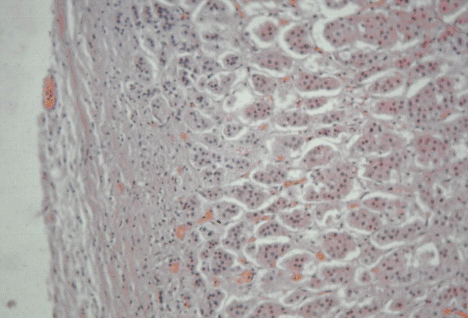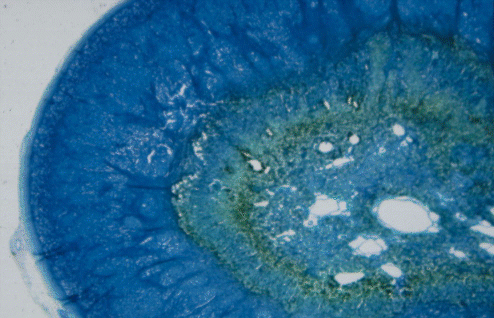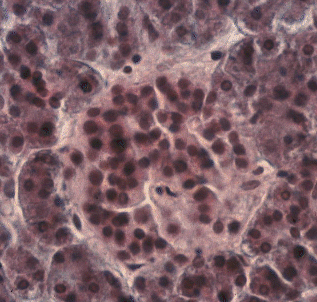ENDOCRINE SYSTEM
Introduction
- Communication between cells and organs within the body is essential for the efficient control of body metabolism. Nerve impulses and hormones are the two best known types of communication.
- Neurons communicate rapidly by the transmission of action potentials, but they rely on chemical transmitters for the final step of the journey to their destination. Whereas, endocrine glands have made this last step their whole journey: they release chemical transmitters or hormones directly into the blood stream to act on cells at remote destinations.
- Unlike exocrine glands that release their secretions onto the skin or into the alimentary canal, the endocrine glands do not need a duct for the removal of their secretions.
Abbreviations
ACTH = adrenocorticotropic hormone
ADH = anitdiuretic hormone = vasopressin
CRH = corticotropin releasing hormone
FSH = follicle stimulating hormone
GnRH = gonadotropin releasing hormone
ICSH = interstitial-cell stimulating hormone
LH = luteinizing hormone
LTH = luteotropic hormone
MSH = melanocyte stimulating hormone
PTH = parathyroid hormone
STH = somatotropic hormone
TRH = thyrotropin releasing hormone
TSH = thyroid-stimulating hormone
Pituitary
- The pituitary gland or hypophysis is a small round gland located ventrally to the brain.
- Embryologically, the pituitary is formed from the conjunction of an outgrowth from the floor of the brain (neurohypophysis or posterior pituitary) and a detached upgrowth from the roof of the mouth (adenohypophysis or anterior pituitary).
- The hypothalamus releases CRH which releases ACTH, and GnRH which releases LTH, FSH and LH, and TRH which TSH.
- The neurohypophysis releases ADH which causes water retention by the kidney, and OXYTOCIN which causes uterine contraction during parturition, then milk release.
- The adenohypophysis produces STH which stimulates body growth, LTH which stimulates mammary glands, ACTH which stimulates the adrenal cortex, TSH which activates the thyroid glands and adipose tissue lipase, FSH which activates the testes or prepares the ovarian follicles, and LH which completes spermatogenesis
and stimulates androgen secretion OR (depending on the sex of the animal) which stimulates ovarian follicle growth, estrogen secretion, ovulation, formation of the corpus luteum, and progesterone secretion.
- an odd bit of the gland, the pars intermedia, produces MSH which stimulates pigment cells.
Pineal
- The pineal gland is a neurosecretory gland whose evolutionary origin may be traced back to the third eye found in the skull roof of certain fossil fishes.
- The pineal is innervated by sympathetic nerves and is located deep in the brain, anterior to the cerebellum.
- It releases the hormone melatonin which acts on the ovaries to inhibit the estrus cycle. Melatonin also has wider effects on other neuroendocrine control systems. Melatonin synthesis is inhibited by nerve impulses to the pineal gland; the frequency of impulses is inversely related to the amount of visible light reaching the retinas of the eyes. In poultry, the pineal gland is probably responsible for circadian rhythms (24-hour cycles) in physiological activity.
Thyroid
- The thyroid is located around the trachea, near to the larynx in mammals. Left and right thyroid glands are joined ventrally in pigs; in cattle and sheep the junction is restricted to a narrow connecting isthmus. In poultry, left and right thyroid glands are deep red in color instead of pale brown, and they are completely separated at the base of the neck.
- The thyroid glands receive an abundant supply of blood from which they are able to capture iodine. Iodine is used for the synthesis of hormones which contain three or four iodine atoms, triiodothyronine and thyroxine.
- Thyroid hormones regulate oxidative metabolism and heat production in the body.
- Some cells in the thyroid also produce the hormone calcitonin.
Parathyroids
- In mammals, two pairs of very small parathyroid glands are located in or near the thyroid glands. Their position is variable and they are difficult to identify in the abattoir.
- In poultry, there is a small parathyroid gland at the posterior end of each thyroid.
- The parathyroid hormone produced by the parathyroid glands forms one circuit of a double feedback system that regulates calcium levels in blood and bone. The other circuit is mediated by the hormone calcitonin from the thyroid gland. Parathyroid hormone causes the mobilization of calcium from bone. Calcitonin causes the inhibition of calcium release from bone.
Thymus
- The thymus is a large gland, particularly in young animals, and is located anteriorly to the heart with lateral extensions into the neck.
- Thymus glands are sold for human consumption as sweetbreads.
- The thymus gland is composed of lymphoidal tissue and has a vital immunological function in young animals. It produces hormones which act on other cellular elements of the immune system.
- The animal's immune system, with which it defends itself against invading microorganisms, exhibits two types of responses (humoral and cell-mediated).
- Humoral antibody responses include: (1) the production of circulating antibodies, (2) the binding of antibodies to antigens, (3) the facilitation of phagocytic ingestion, and (4) the activation of certain blood proteins (the complement) to aid in the destruction of antigens.
- Cell mediated responses occur when specialized types of cells directly attack, or encourage macrophages to attack diseased cells bearing the target antibodies.
- The body contains two types of lymphocytes - the B cells responsible for humoral responses, and the T cells responsible for cell-mediated responses. Both types of lymphocytes originate from hemopoietic (blood-forming) stem cells of the fetal liver or adult bone marrow.
- Early in their development, immature lymphocytes migrate from their source into the circulation. In both mammals and poultry, immature T cells collect in the thymus where they undergo further development before they migrate out to peripheral lymphoid tissues (such as the spleen, the lymph nodes or Peyer's patches in the intestinal wall) to become mature T cells. In poultry, the B cells migrate to the Bursa of Fabricius for a period of development before they are released. In mammals, however, there is no Bursa or equivalent structure, and B cells are retained in the bone marrow for this period of their development.
Adrenals
- Left and right adrenal glands are located anteriorly to the kidneys; in cattle they are roughly triangular, in sheep and poultry they are oval, and in pigs they are elongated.
- Each adrenal gland is composed of two distinct endocrine glands. In mammals, the adrenal cortex seen below,

is wrapped AROUND the adrenal medulla, although the two glands are mingled in poultry.
In the image below, the outer cortex is blue and the inner medulla of this pig adrenal is greenish.

- Part of the cortex, the multiformis, responding to Na and K ions in the blood, produces mineralocorticoids (deoxycorticosterone and aldosterone) which regulate homeostasis of extracellular electrolytes (the fluids between the cells of the body).
- Other parts of the cortex (fasciculata and reticulata), controlled by ACTH and CRH produces glucocorticoids (cortisone, hydrocortisone, and corticosterone) which faciliatate gluconeogenesis (building up new sugars), proteolysis (breaking down proteins), and release of fatty acids from adipose tissue depots (as in slimming, although most philosophers agree it is better to be fat and happy than thin and miserable).
- The medulla of the adrenal gland under neural control produces catecholamines (epinephrine and norepinephrine) that enable animals to respond to stress (this is the gland responsible for exam fever).
Pancreas

Remember the pancreas?
- The islets of Langerhans seen below are microscopic areas of the pancreas with an important endocrine function.

- The islets contain alpha cells that produce glucagon, and beta cells that produce insulin. Insulin facilitates the uptake and utilization of blood glucose by body cells. Thus, insulin deficiency causes the elevated blood sugar levels that occur in diabetes.
- Pancreas glands may be collected in abattoirs for the commercial isolation of insulin. Insulin concentration is highest in the tail end of the pancreas, and the tissue must be kept dry before being frozen since insulin is water soluble. The action of glucagon is the opposite to that of insulin.
SORRY for this horrible, abbreviated summary of endocrinology. I am sure there are far more interesting things on the WWW: this list is really just a quick memo for helping to understand animal growth later on. Other organs of the body also produce hormones in addition to their other activities. The testes produce testosterone; the ovaries produce estrogen, progesterone and relaxin; and during gestation, the uterus and placenta secrete chorionic gonadotropin. The stomach wall also secretes gastrin while the kidney produces the hormone renin. The liver produces somatomedins. Oh, heck, that's enough, it's time to go out for a beer at the Albion.





